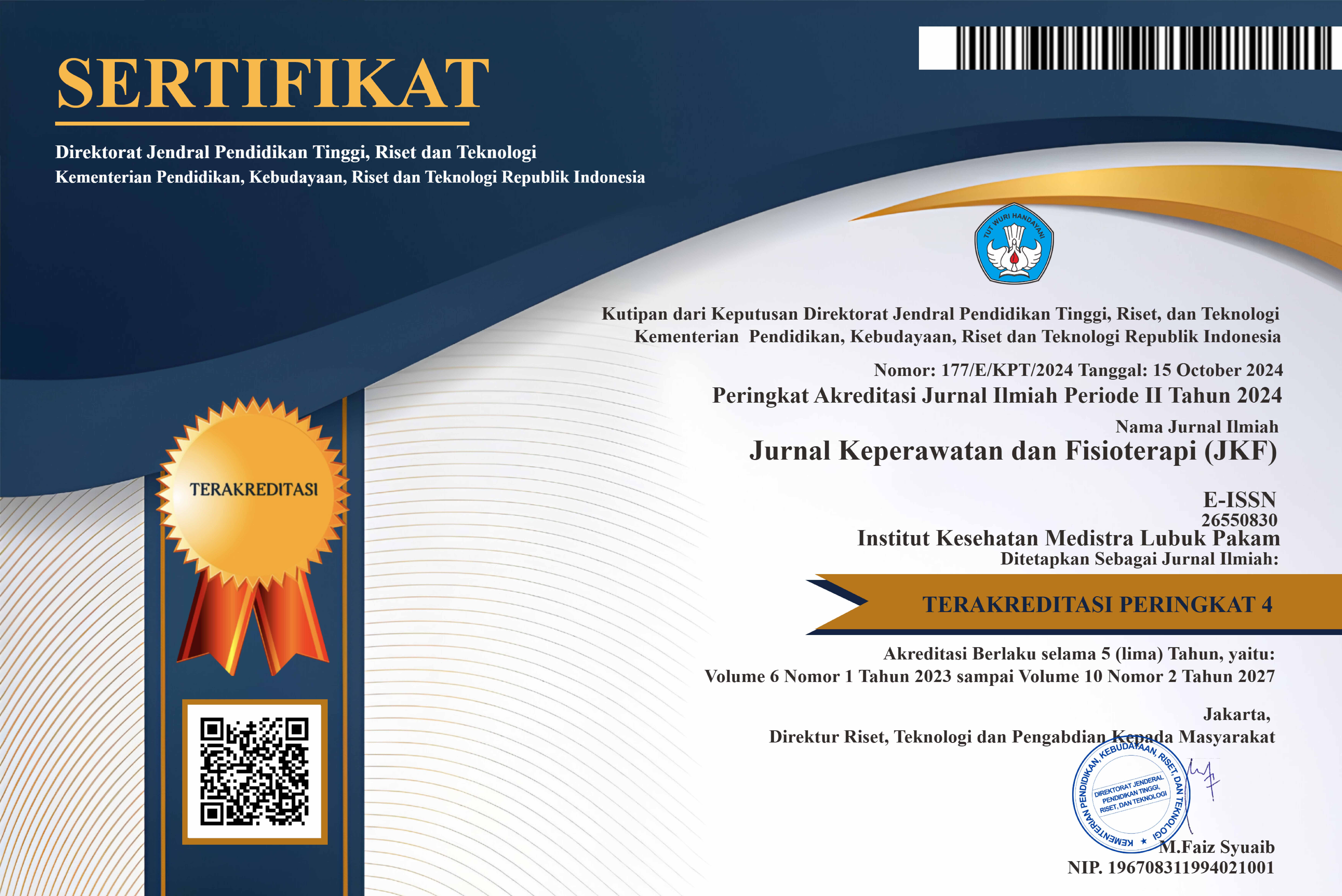THE EFFECT OF FOOT EXERCISE ON ANKLE BRACHIAL INDEX VALUE IN DIABETES MELLITUS PATIENTS IN HOSPITAL GRANDMED HOSPITAL PAKAM
DOI:
https://doi.org/10.35451/jkf.v3i2.674Keywords:
Foot Exercise, Ankle Brachial Index (ABI), Diabetes MellitusAbstract
Diabetes mellitus is a chronic non communicable disease. Characterized by an increase in blood sugar levels, the result is that the pancreas cannot produce or the body cannot use insulin. Foot exercise in diabetes mellitus is a leg movement exercise that aims to improve blood circulation in the legs and detect the severity of vascularity in the legs. The research objective was to assess the effect of foot exercise on the value of the Ankle Brachial Index (ABI) in diabetes mellitus patients at Grandmed Lubuk Pakam Hospital. Quasi experimental research design pretest and posttest without control. The study was conducted from October to December 2020 at Grandmed Lubuk Pakam Hospital with 43 respondents, the samples were taken using consecutive sampling technique. The intervention was carried out twice a day. Consistent exercise can increase the supply of oxygen in the blood to the peripheral tissues in the legs. The results of the research from the univariate analysis found that male gender were 23 respondents (53.5%), aged > 55 years were 21 respondents (48.8%), the use of blood sugar drugs was 39 respondents (90.7). While the bivariate results using the Wilcoxon test, it was found that there was a significant effect between the average ABI value before the intervention 0.84 and 0.95 after intervention, p = 0.000. The results of the study concluded that there was an effect of foot exercise on the value of the ankle brachial index (ABI) in diabetes mellitus sufferers, where leg blood flow was getting better after foot exercise.
Downloads
Downloads
Published
Issue
Section
License
Copyright in each article is the property of the Author.


























